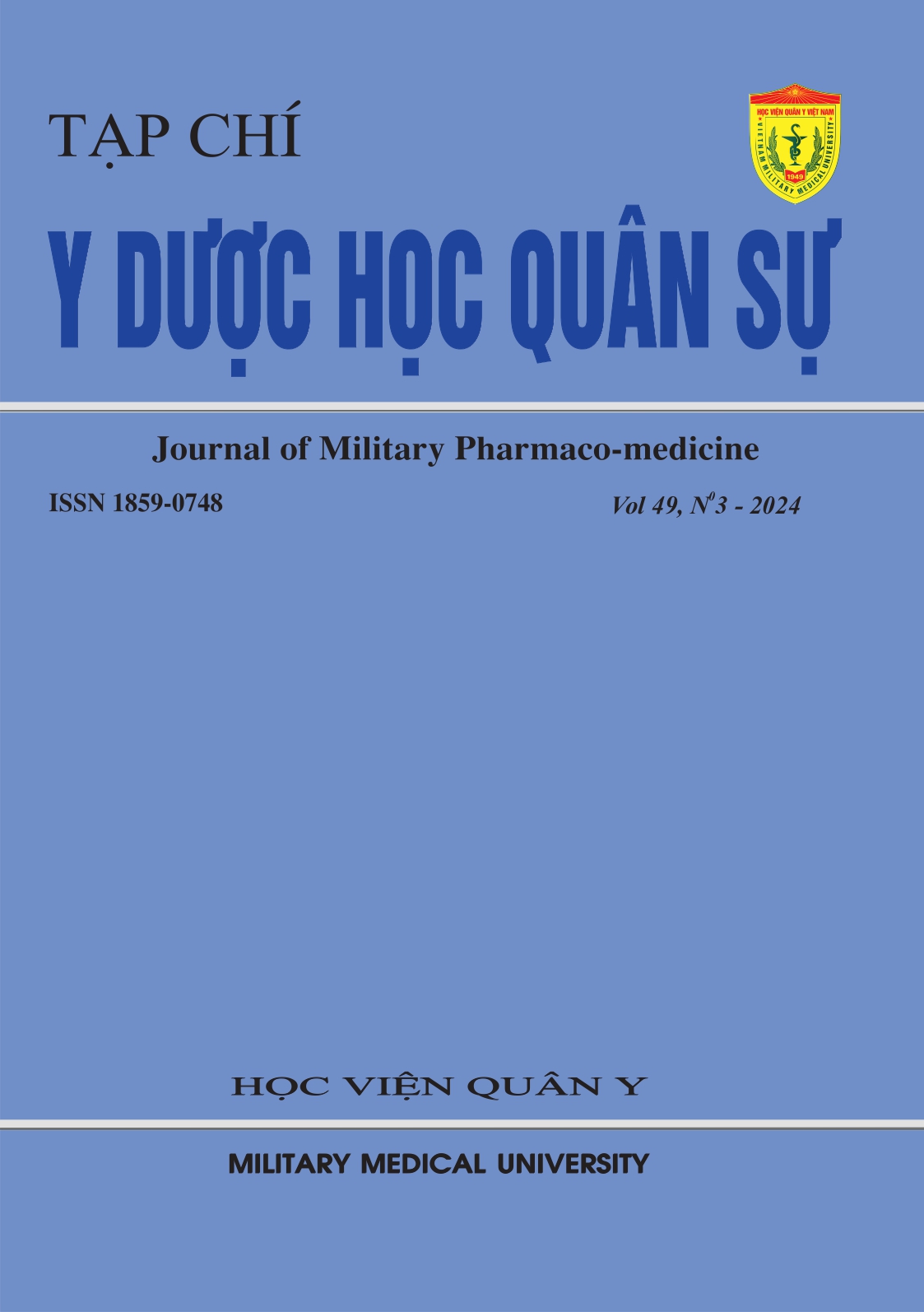CĂN NGUYÊN VÀ TÌNH TRẠNG KHÁNG KHÁNG SINH CỦA MỘT SỐ VI KHUẨN GÂY BỆNH THƯỜNG GẶP TẠI TRUNG TÂM HỒI SỨC CẤP CỨU - CHỐNG ĐỘC, BỆNH VIỆN QUÂN Y 103
Main Article Content
Abstract
Research on the etiology and antimicrobial resistance at the Intensive care unit in the Military Hospital 103
ABSTRACT
Objective: To investigate the etiology and antimicrobial resistance of some common pathogenic bacteria at the Intensive care unit (ICU) - Military Hospital 103. Subject: Bacterial strains isolated through specimens of patients in ICU - 103 Military Hospital from January 2020 to December 2021. Research methods: Descriptive epidemiology and laboratory study. Results: 282 strains of pathogenic bacteria were isolated; including 56.4% from the respiratory tract specimens (56.4%); of which bronchial fluid and sputum were 44.3% and 12.1%, respectively; blood specimens were 29.4%. Gram-negative bacteria accounted for the vast majority of 87.6%; Gram-positive bacteria were only just 12.4%. Among gram-negative organisms, A. baumannii and P. aeruginosa were the most common species, each of them accounted for 29.4%; K. pneumonia and E. coli were 9.6% and 9.2%, respectively. In gram-positive bacteria; S. aureus accounted for the highest rate of 3.9%; S. pneumonia was 1.4%; E. faecalis was 1.1%. A. baumannii and P. aeruginosa were resistant to the vast majority of commonly used antibiotics. A. baumannii A. baumannii was resistant to Meropenem 96.3%, Imipenem 100%; Colistin 62.8%; Amikacin 89.1%. P. aeruginosa was resistant to Imipenem 87.5%; Meropenem 77.5%; Amikacin 62.4%; Colistin 47.4%. S. aureus was resistant to Cefoxitin 75%, resistant to commonly used antibiotics ranging from 50 to 70% (Ceftriaxone 62.5%; Meropenem 70.0%; Moxifloxacin 50.0%); were highly susceptible to agents used for MRSA strains such as Vancomycin 85.7%; Linezolid and Tigercylin were both 100.0%. Conclusion: The bacteria strains isolated from patients in ICU were most common Gram-negative bacteria, by respiratory specimens, showed high rates of antibiotic resistance.
Article Details
Keywords
Antibiotic resistance, pathogenic bacteria, Intensive care unit (ICU)
References
2. Patel J, Weinstein M, Eliopoulos G. M100 Performance standards for antimicrobial susceptibility testing. Reference Source. 2017.
3. Bùi Hồng Giang. Nghiên cứu đặc điểm vi khuẩn và điều trị nhiễm khuẩn Bệnh viện tại Khoa Hồi sức tích cực Bệnh viện Bạch Mai năm 2012. Luận văn Thạc sĩ Y học. Đại Học Y Hà Nội. 2013.
4. Maki DG, Crnich CJ, Safdar NJC. Nosocomial infection in the intensive care unit. Critical Care Medicine. 2008; 1003.
5. Dasgupta S, Das S, Chawan NS, et al. Nosocomial infections in the intensive care unit: Incidence, risk factors, outcome and associated pathogens in a public tertiary teaching hospital of Eastern India. Indian J Crit Care Med. 2015; 19(1):14-20.
6. Osih RB, McGregor JC, Rich SE, et al. Impact of empiric antibiotic therapy on outcomes in patients with Pseudomonas aeruginosa bacteremia. Antimicrob Agents Chemother. 2007; 51(3):839-844.
7. Turner PJ. MYSTIC Europe 2007: Activity of meropenem and other broad-spectrum agents against nosocomial isolates. Diagnostic Microbiology and Infectious Disease. 2009; 63(2):217-222.
8. Chen LK, Kuo SC, Chang KC, et al. Clinical antibiotic-resistant acinetobacter baumannii strains with higher susceptibility to environmental phages than antibiotic-sensitive strains. Sci Rep. 2017; 7(1):6319.
9. Lê Văn Nam. Nghiên cứu đặc điểm lâm sàng, cận lâm sàng, tính kháng kháng sinh, gen kháng thuốc của Staphylococcus aureus, Escherichia coli ở bệnh nhân nhiễm khuẩn huyết (10/2012 - 6/2014). Luận án Tiến sĩ y học. Học viện Quân y. 2017.


